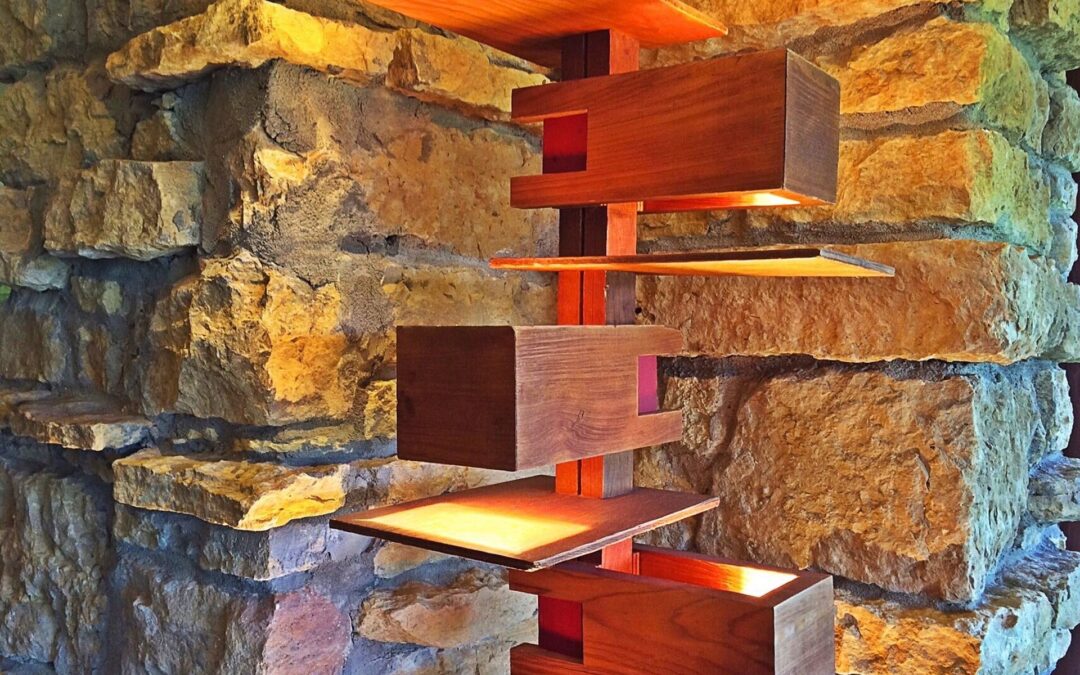Several of The Most Unforgettable Quotes from Frank Lloyd Wright
In the mid-1900s, Frank Lloyd Wright was one of the most famous architects in America. He also gave some of the most memorable quotes about architecture. As with many creative personalities, his views and opinions varied over time, which means there’s no official “Wright” quote that encapsulates his ideas. Still, his thoughts on the nature of design have resonated with people for generations.
While attending the University of Illinois at Urbana-Champaign, I came to realize my admiration and passion for architecture created by Wright. I visited his works around the country as often as my funds would permit. One summer in graduate school, I borrowed a tent and camped near Falling Water. As students, we barely had any money, and once we told the staff we were students from the School of Architecture, they took us on a private tour of the grounds and buildings. They related that Mr. Wright had said, “Always be kind to the students of architecture, but not to architects themselves.” Needless to say, it was one of the greatest visits that I still vividly remember to this day.
Beauty and simplicity
Frank Lloyd Wright’s buildings often make use of simple geometric shapes; he even designed his own typeface. He believed that the best buildings are those in which the structure is expressed through the materials. The grain of the wood and the texture of the stone are more beautiful than paint, concrete, or brick. One of his most famous quotes was: “Simplicity is the ultimate sophistication.”
Form follows function
What does beauty have to do with utility? According to Wright, everything. The form of a building should follow its function. If it’s used as a clothing store, it should be shaped like a clothes rack. If it’s a house, it should look like a house. This rule of thumb seems simple enough but, as Wright saw it, architects had gotten away from this idea in the Modernist movement. In the early 1900s, architects were becoming interested in clean lines, open spaces, and new construction materials like steel and concrete. Wright believed that the form of buildings should be expressed in the materials used.
Good architecture should be recognized instantly
This is one of the main ideas behind “form follows function”. If a building is designed correctly, it should look instantly like what it is. The Guggenheim Museum in New York City is one of Wright’s most famous buildings. It’s a building that is instantly recognizable as a museum. Visitors going there for the first time know what to expect within seconds. Wright also believed that good architecture should be instantly recognizable as such, even if it is a completely new type of building. His dramatic Fallingwater house in Pennsylvania is a great example of this. It looks like no other house ever built. Visitors have said that they “instantly knew” that they were in a Frank Lloyd Wright house.
People don’t care about architecture
Why do people design buildings the way they do? Wright believed that most people, even the ones living in his buildings, didn’t care about architecture. They had no interest in the way his buildings looked or their structure. He distinguished between “practical people” and “the aesthetic man”. He believed that the former were the ones who needed to be satisfied by architecture. The aesthetic man might want a beautiful building, but he doesn’t need one; he can live in a junkyard. The practical man, on the other hand, needs to be more comfortable and safe than the aesthetic man. Wright’s philosophy for the aesthetic man was simple: be beautiful. For the practical man, it was more complicated. They needed to be both beautiful and functional. They needed clean, open spaces and a lot of light and ventilation. His designs included modular arrangements that allowed for easy expansion, maximum light, and natural ventilation. He also designed many communal buildings, like the Imperial Hotel in Japan and the Midway Gardens in Chicago, where people could interact and live together in a new way.
Genius and rarity
Despite his belief that good architecture should be recognized instantly, Wright also claimed that the best architecture was that which was rare. He believed that architecture should be like jewels, rare and valuable. He wanted his buildings to be recognized as unique, valuable, and beautiful. Wright believed there was a “genius” behind every good building. He didn’t like the word “genius” because it suggested that someone had been “born different”. Instead, he believed, every person had the ability to create genius architecture. He said that all great architecture was the result of a “happy accident”.
The cost of quality is durability
Wright believed that good architecture should express the materials used; that even a concrete building should look like concrete. This was partly because concrete, which he used to build many of his houses, was a new material that needed to be recognized for what it was. And it was partly because he believed concrete was a better material than wood, which was more expensive and took more time to make. Wright believed that concrete was a more durable material, which made it a better investment. He said that good architecture should be as permanent as possible.
Understanding
Frank Lloyd Wright was an innovative architect whose work is still admired and studied today. He believed that architecture should be recognizable, permanent, and beautiful. He argued that good architecture is rare, and should be recognized as such. His buildings include the iconic Fallingwater and the Guggenheim Museum. Wright’s most famous quotes are about beauty and simplicity, form following function, good architecture being instantly recognizable, people not caring about architecture, genius being behind every good building, and the cost of quality being durability.

